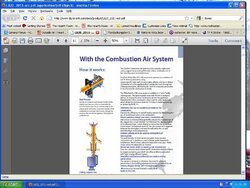Ok I know that this topic has been put thru the wringer a million times, and there are plenty of burners on both sides of the fence (OAK vrs No OAK). But as I make my decisions for the upcoming purchase, I intend to investigate all the options. I found a reputable company that sells a product that really has me confused. They have a pipe (chimney) system that draws air from your attic space down the outside layer of a multi-wall stovepipe. There is a T or exit near the stove where a smaller pipe is attached and ran to the outside air connection on your stove. Sounds simple enough, but what about that cold attic air cooling down the stovepipe or does the multi-wall pipe eliminate the issue?
Outside Air
- Thread starter timusp40
- Start date
-
Active since 1995, Hearth.com is THE place on the internet for free information and advice about wood stoves, pellet stoves and other energy saving equipment.
We strive to provide opinions, articles, discussions and history related to Hearth Products and in a more general sense, energy issues.
We promote the EFFICIENT, RESPONSIBLE, CLEAN and SAFE use of all fuels, whether renewable or fossil.


